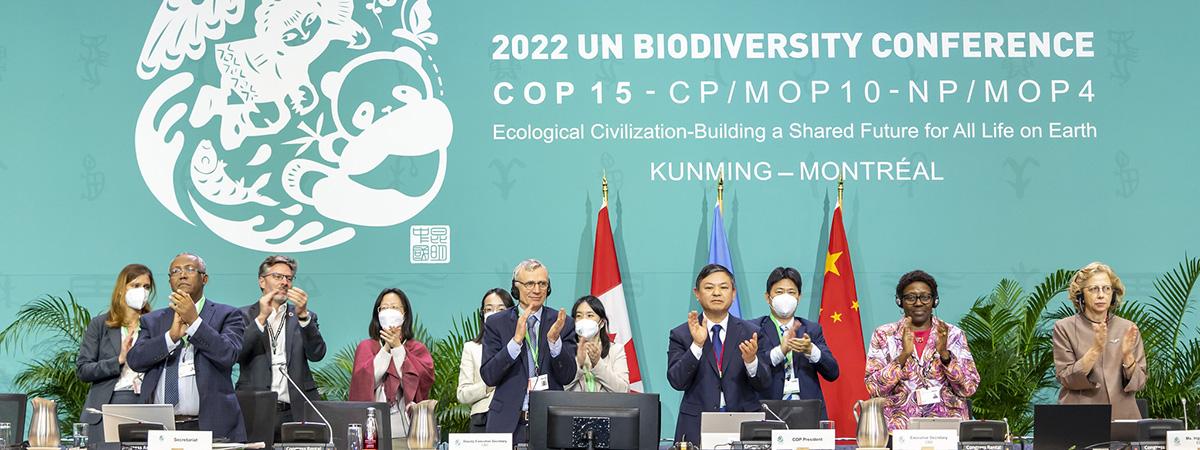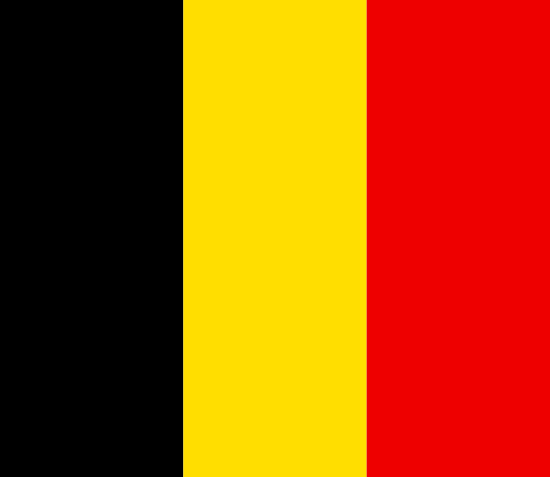Kunming-Montréal Global Biodiversity Framework

Key outcomes agreed at COP15
After two weeks of negotiation, 196 nations adopted a historic package, the Kunming – Montreal Global Biodiversity Framework. This agreement will provide a strategic vision and a global roadmap for the conservation, protection and sustainable management of biodiversity and ecosystems through 2030.
The 4 overarching goals and the 23 targets include agreements that address the direct drivers of biodiversity loss. The package includes also a partially developed monitoring framework, and decisions on review of implementation, resource mobilisation, digital sequence information, and capacity building and technology transfer
| Target | Description | |
|---|---|---|
| 1 |
|
|
| 2 |
|
|
| 3 |
|
|
| 4 |
|
|
| 5 |
|
|
| 6 | Mitigate or eliminate the impacts of invasive alien species, reduce the rates of establishment of invasive species by 50% by 2030 | |
| 7 | Reduce pollution risks and impacts from all sources by 2030, reduce the overall risk from pesticides by half | |
| 8 | Minimise the impacts of climate change and ocean acidification on biodiversity | |
| 9 | Ensure sustainable use and management of wild species, while protecting customary use by Indigenous peoples | |
| 10 |
|
|
| 11 | Restore and enhance ecosystem function through nature-based solutions and ecosystem-based approaches | |
| 12 | Increase the area and quality of urban green and blue spaces | |
| 13 | Fair and equitable sharing of the benefits arising from the use of genetic resources | |
| 14 | Integration of biodiversity into policies and development across all sectors | |
| 15 | Enable businesses to monitor, assess and disclose their impacts on biodiversity | |
| 16 | Encourage sustainable consumption, including by reducing food waste by half by 2030 | |
| 17 | Strengthen capacity for biosafety measures and ensure benefits-sharing from biotechnology | |
| 18 | Phase out or reform harmful subsidies in a just way, reducing them by $500bn by 2030 | |
| 19 | Substantially increase financial resources, mobilise $200bn per year by 2030 from all sources, including $30bn from developed to developing countries | |
| 20 | Strengthen capacity-building and technology transfer | |
| 21 | Integrated and participatory management, including the use of traditional knowledge | |
| 22 | Equitable representation and participation of Indigenous peoples and local communities | |
| 23 | Ensure gender equality in the implementation of the framework |
The full wording of the targets can be found in the Kunming-Montreal Global Biodiversity Framework (pdf).
Mobilisation from all sources (domestic and international, public and private) is required to generate substantial financial resources for biodiversity. Businesses have a major role to play in delivering on the goals, as many of them are highly or moderately dependent on nature. To reduce their biodiversity-related risks and negative impacts, a concrete policy direction introduced the requirement of monitoring, assessing and disclosing business impacts on nature.
Delegates also agreed to establish within the GBF a multilateral fund for the equitable sharing of benefits between providers and users of digital sequencing information (DSI), to be finalized at COP16 in Colombia in 2024.
An essential element of the GBF success is the design of a clear and robust monitoring framework, which can guide Parties in the implementation, reporting and review. A set of indicators were adopted at COP15, but further technical work is still needed. The agreement also compels Parties to monitor, to review and report in 2026 and 2029 their progress against the GBF's goals and targets.
